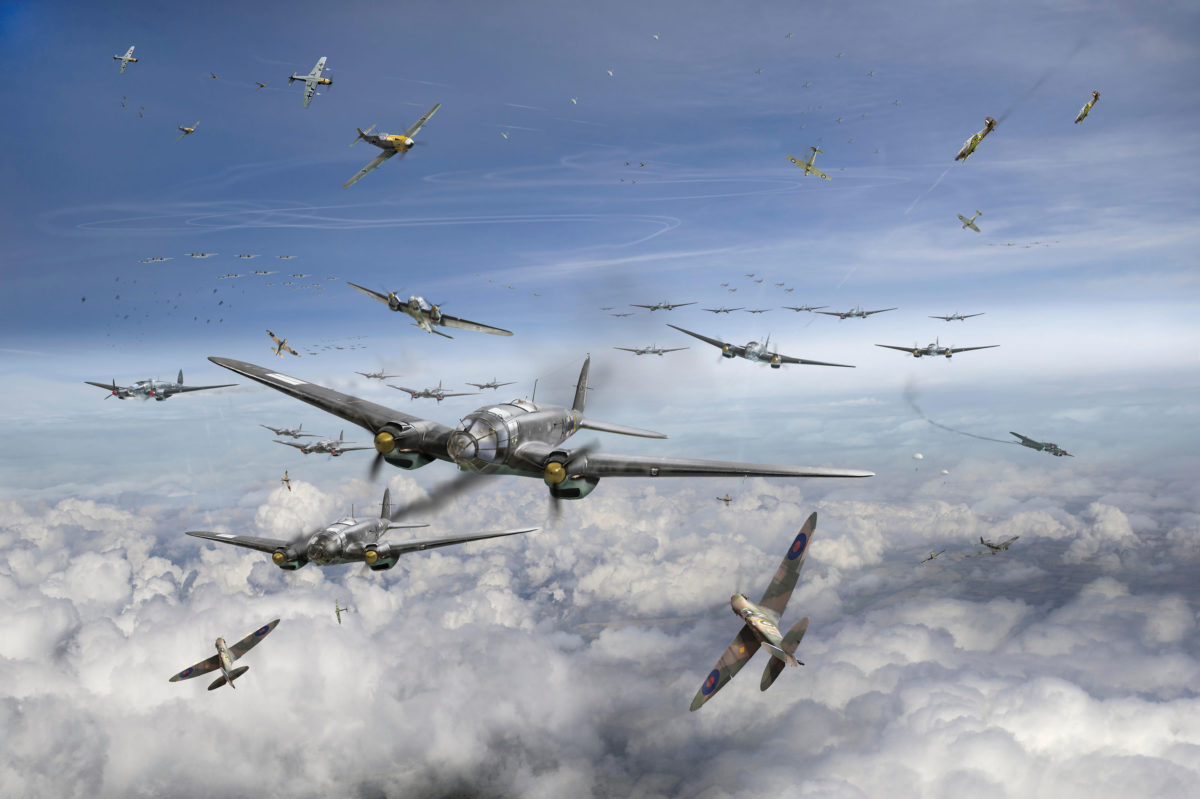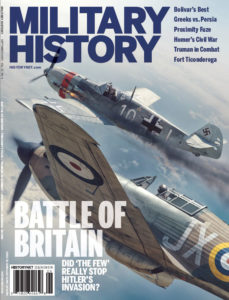On Aug. 20, 1940, at the height of the Battle of Britain, Prime Minister Winston Churchill addressed the House of Commons. With his resonant voice masterfully manipulating the English language, the gifted orator paid credit to the Royal Air Force pilots and crewmen then fighting in the skies over the south of England: “Never in the field of human conflict was so much owed by so many to so few.”
The phrase has resonance 80 years later. Conventional wisdom holds “The Few” handed Nazi Germany its first defeat in World War II and set the Allies on the road to ultimate victory. But is that true? After eight decades perhaps it’s time for an objective analysis.
The air raids Adolf Hitler ordered against Britain in the summer of 1940 were not the first aerial attacks on that island nation. During World War I German Zeppelins and conventional aircraft bombed towns across England, injuring and killing nearly 5,000 people. Rapid communication among the defenders was key to reducing the carnage caused by the raids. During attacks police constables claimed priority on phone lines to provide current information on the raiders’ location and direction. Thus despite technical limitations, the British established a model for defending their country from air attacks.
While historians roundly condemn Prime Minister Neville Chamberlain for seeking to appease Hitler by signing the 1938 Munich Agreement, some observers note the British badly needed the extra time to prepare. There is no doubt the calculating German chancellor duped Chamberlain.
Yet the partition of Czechoslovakia provided the latter’s countrymen a precious 11 months to begin making up for two decades of naive optimism and neglect after the Great War. From the declaration of war in early September 1939 another 10 months passed before the aerial storm broke over Britain. Those 21 months, purchased at the expense of Czech independence, proved especially crucial for the RAF.
The so-called “Phony War” turned chillingly real in May 1940 when the German military unleashed the blitzkrieg that swallowed Western Europe, leaving Britain to face the triumphant Third Reich alone. After a short interval in which Hitler expected London to concede to his demands, the Battle of Britain began that July with persistent Luftwaffe attacks.
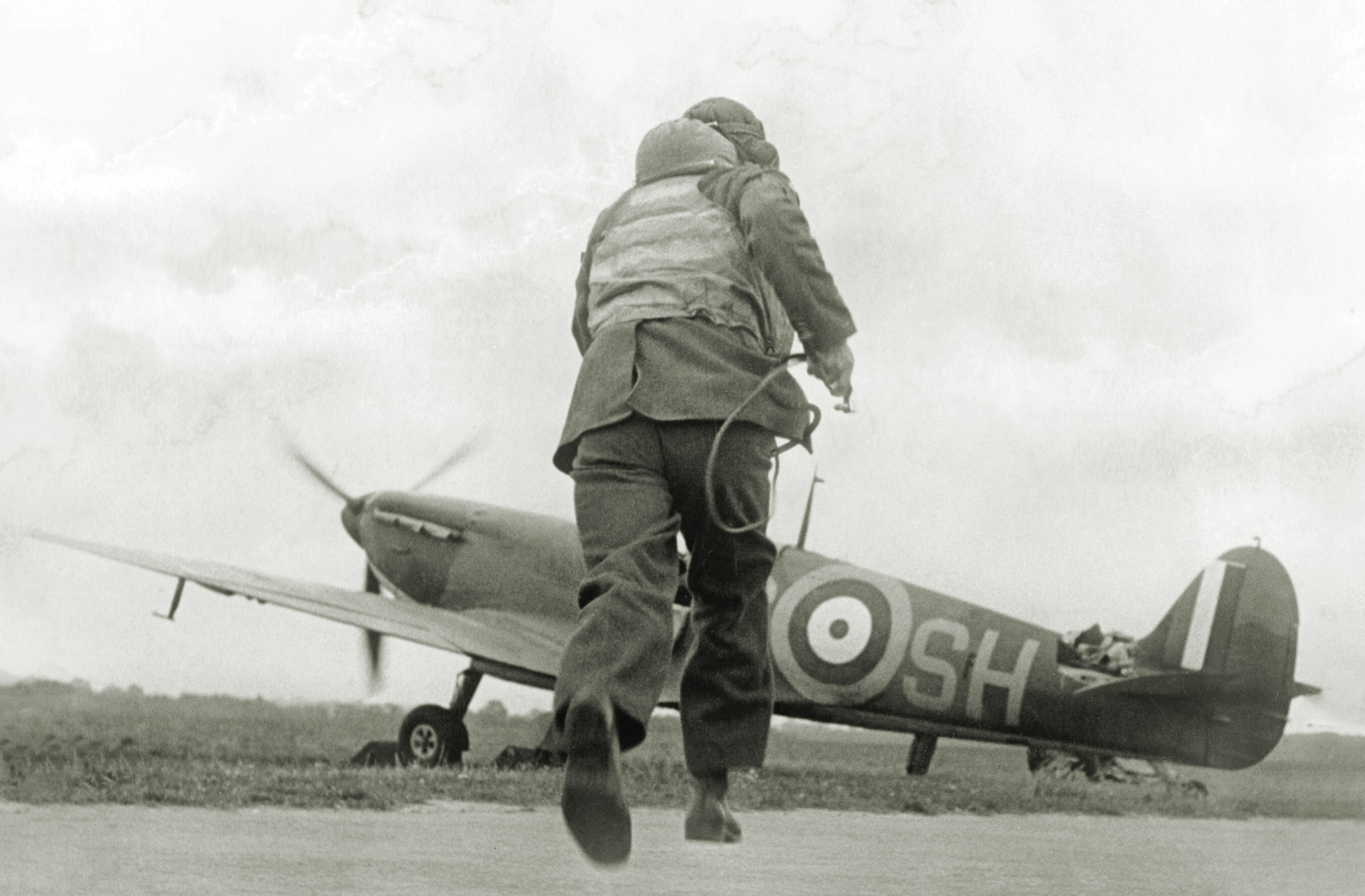
The course of the battle was in many ways determined by a mix of techniques and technologies developed in the interwar years. Obvious factors included aircraft and radar—vitally linked by voice radio—and high-octane fuel. Organizational innovation was also a factor.
In 1935 the RAF had begun an expansion program that increased its numbers and capabilities. By January 1938 it and the Royal Navy counted little more than 2,000 “first line” aircraft (including many biplanes), about 1,500 of which were based in Britain. The tally reflected a doubling of air strength since the expansion began, with nearly three times the number of aircraft on “Home Establishment.”
Fighter Command remained the domain of biplanes, dominated by Gloster Gauntlets and Gladiators. In fact, the “Glad” had only entered service in early 1937—the same year as the far more capable Hawker Hurricane monoplane. The RAF received its first wartime fighters in the two years before open hostilities began. By January 1938 No. 111 Squadron had exchanged its Gauntlets to become the first Hurricane unit. Over the next 20 months 17 more squadrons converted to the “Hurribox,” with production averaging about 25 per month. In June 1938 No. 19 Squadron—also flying Gauntlets—welcomed the first Supermarine Spitfires. The transition from a 230-mph two-gun biplane to a 370-mph eight-gun monoplane was nothing short of revolutionary.
Both the Hurricane and Spitfire employed Rolls-Royce Merlin engines.
The RAF then used 87-octane fuel, limiting Merlins to about 3,000 rpm. The Air Ministry asked Esso to develop 100-octane gasoline, which it duly produced, albeit in insufficient amounts. Shortly before the war Royal Dutch Shell was able to provide additional supplies. Equipped with the 100-octane aviation fuel, the Spitfires and Hurricanes nearly doubled their respective boosts, yielding 300 additional horsepower. Due to ongoing fuel shortfalls, the valuable commodity went almost exclusively to Merlin squadrons, arriving in quantity barely in time—during the spring of 1940.
As important as Merlin-engined fighters proved during the battle, another technology—radio detection and ranging, or radar—was even more vital to Britain’s defense.
As early as 1934 Britain had experimented with sound detection for early warning, but technology lagged. Radar showed exceptional promise, emerging as radio detection finding (RDF). An RAF committee consulted Robert Watson-Watt, a noted electronics authority and Scottish descendant of the inventor of the practical steam engine. Working with a handful of colleagues, Watson-Watt demonstrated in 1935 that “aeroplanes” passing through a radio wave interrupted the signal strength, suggesting RDF could detect incoming aircraft from a considerable distance. The Air Ministry was convinced.
Suspecting the Luftwaffe would come at night, the RAF pushed to deploy an all-weather early warning capability. The first five radar stations were installed in 1937, launching the Chain Home early warning network, which by September 1939 had grown to 21 stations covering England’s eastern and southern coastal approaches. The network expanded throughout the war.
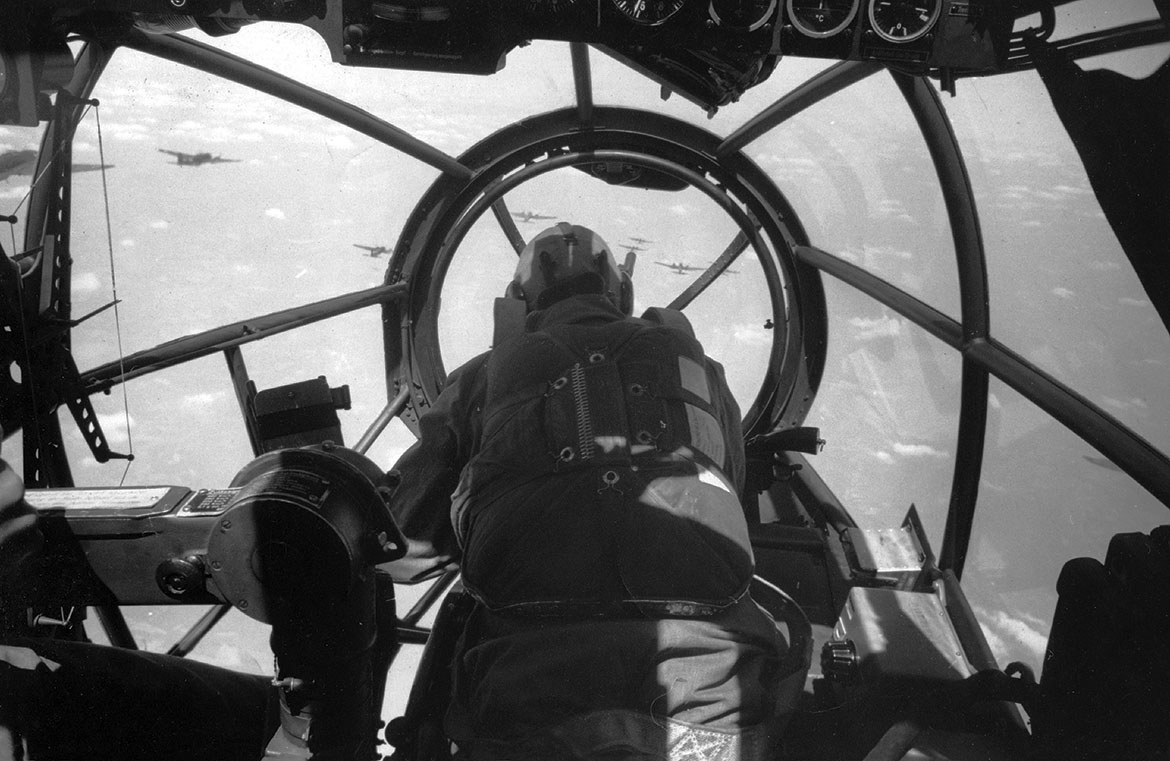
Chain Home setups were perched atop 360-foot masts, with a transmitter and receiver mast at each site. The technology integrated high- and low-altitude radars, providing coverage roughly from 500 feet upward out to as much as 100 miles. Despite its limitations, Chain Home was a quantum leap in military technology.
However, CH radar only provided reasonably accurate range and bearing on incoming targets. Altitude was far less reliable, with margins of error into the thousands of feet. Operators sometimes had to refer to “fade charts,” based on peacetime tests, with aircraft appearing and disappearing at certain altitudes depending on the radar horizon. While such charts were only approximations, they gave controllers a starting point.
The network necessarily looked seaward. Once German aircraft passed inland, however, the British were electronically blind over most areas, relying instead on visual reports from a network of outposts. The designated Royal Observer Corps was largely composed of civilians with rudimentary training in aircraft recognition and altitude estimates. While the estimates passed to sector stations were often wrong, the reports provided basic data on enemy numbers and direction.
Some military radio and radar operators developed a high regard for the ROC. “An Observer Corps post was simply a sandbagged hole in the ground,” controller Sgt. Stanley Wright recalled. “There’d be two or three observers sitting in a little hole with hats, microphones and earphones on. Someone would have a theodolite affair at the ready to look for aircraft. They were the fastest people I’d ever seen at recognizing aeroplanes. Just give them a glimpse, and they could say, ‘Junkers 88.’ Each observer post was connected to a main center by telephone.”
Among the defenders were Women’s Auxiliary Air Force personnel, the most capable of whom worked as radar plotters in fighter control centers.
One was 20-year-old Edith Heap, who was engaged to Pilot Officer Denis Wissler of No. 17 Squadron. Tragically, Edith heard the radio chatter of the very dogfight in which her fiancé died. Heap worked at RAF Debden, a sector station in North Essex. In 2006 she recounted her wartime duties to The Yorkshire Post:
“Any fool could do it. You just had to be accurate. I sat underneath the controller’s desk and drew up a plot on a piece of tracing paper so he could see where to vector the aircraft to intercept the enemy. My information came from Uxbridge. RDF—radar—was top secret, and we were told not to breathe a word about it to anyone. One girl went home and apparently talked to her parents. She got two years in Holloway jail.”
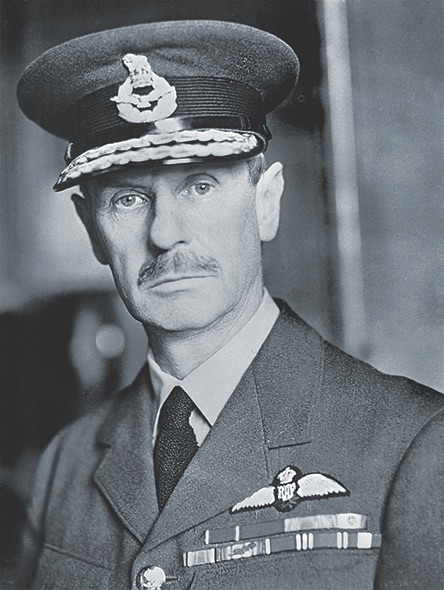
After the war Flight Lt. Charles MacLean, a sector controller, summarized the early warning system. “The whole theory of fighter defense was created to avoid ‘standing patrols,’” he explained. “If you were guarding the country by having aeroplanes up all the time, you ran out of engine hours, and you were on the ground when the attack occurred. So [RAF Fighter Command leader Air Chief Marshal Hugh] Dowding developed a system of reporting incoming raids. First, he used radar to plot the aircraft as they were approaching Britain, and then he used the Observer Corps to spot them when they’d crossed the coast. All the information was fed to a filter room and then to an operations room, where you got a picture of the developing raids plotted on a table. That picture would be three or four minutes old, but it was sufficiently up to date to get the fighters off when they were really needed.”
The Germans had also acquired certain electronic advantages. Prior to the war they had developed a relatively long-range radio navigation aid that relayed accurate location data to aircraft via widely separated transmitters providing cross bearings. The system was dubbed Knickebein (“crooked leg”) after the transmitters’ angled aerials. It was advanced enough to double as both a navigation and bombing tool.
Little did the Germans know, however, the British had gotten wind of Knickebein before the battle and devised a way to overload the frequencies, rendering it useless Some Luftwaffe aircrews became so turned around that they mistakenly landed at RAF bases.
At the outset of the battle in July 1940 Fighter Command counted 55 squadrons in Britain, having suffered serious attrition in the losing defense of France. About 80 percent of Dowding’s strength was contained in 27 Hurricane squadrons and 18 Spitfire squadrons, with eight Blenheim fighter units and two Defiant outfits. The latter 10 squadrons were only marginally useful in daylight.
Tasked with defending the vital southeast and London itself was No. 11 Group, under Air Vice Marshal Keith Park, a New Zealand–born World War I ace commanding 27 squadrons on nine bases. To the west was No. 10 Group, with 17 squadrons on six fields, commanded by Air Vice Marshal Quintin Brand, a South African who had downed a German Gotha bomber in 1918. Immediately north of Park was No. 12 Group, under Air Vice Marshal Trafford Leigh-Mallory, an accomplished service politician and dagger man. Throughout the battle he consistently refused Park’s requests for immediate reinforcement, preferring to organize his 11 squadrons into big wings in accordance with the military concept of “mass.” But assembling such wings took time Park did not have, thus No. 11’s fields often took a pasting. Conversely, Dowding and Park could rely on Brand.
Their opposition across the English Channel comprised two Luftwaffe air fleets: Belgium-based Luftflotte 2, under Generalfeldmarschall Albert Kesselring, and France-based Luftflotte 3, under Generalfeldmarschall Hugo Sperrle. Between them the field marshals counted 34 groups (most with three squadrons each) of Heinkel He 111, Dornier Do 17 and Junkers Ju 88 level bombers, plus nine groups of Ju 87 (Stuka) dive-bombers. Fighter aircraft comprised 25 groups of single-engine Messerschmitt Bf 109s and eight with twin-engine Bf 110s.
Tasked with flying long-range missions was Norway-based Luftflotte 5, under Generaloberst Hans-Jürgen Stumpff, with four bomber groups and one each 109 and 110 units, the former useless across the North Sea. In all, Reichsmarschall Hermann Göring’s three fleets totaled nearly 1,500 twin-engine bombers, 330 Stukas, 1,200 fighters and some 280 miscellaneous types. Period figures, therefore, pit the three engaged RAF groups with 900 fighters against more than 3,000 German aircraft, plus a small Italian contingent from late October. In both the RAF and Luftwaffe operational rates hovered around 70 percent availability.
British histories assert the Battle of Britain ended on October 31, following continual combat over the preceding 92 days. Pundits still argue over “the score.” German losses are subject to interpretation due to the Luftwaffe’s unusual accounting methods. Any aircraft that did not return was counted as a 100 percent loss, while they assessed damage in varying degrees, from 5 to 95 percent. A typical estimate places German losses at 1,900 to 2,000 planes (from all causes), with about 2,600 airmen killed and 900 captured. RAF casualties are more definite, usually given as 1,100 fighters (plus miscellaneous types) and 520 Fighter Command airmen.
The RAF overclaimed kills by almost half; the Luftwaffe by more than three times as much, with some 3,050 credited victories. The eight Bf 109 wings claimed more than 1,700 victories, led by Maj. Werner Molders’ Jagdgeschwader 51 with 417.
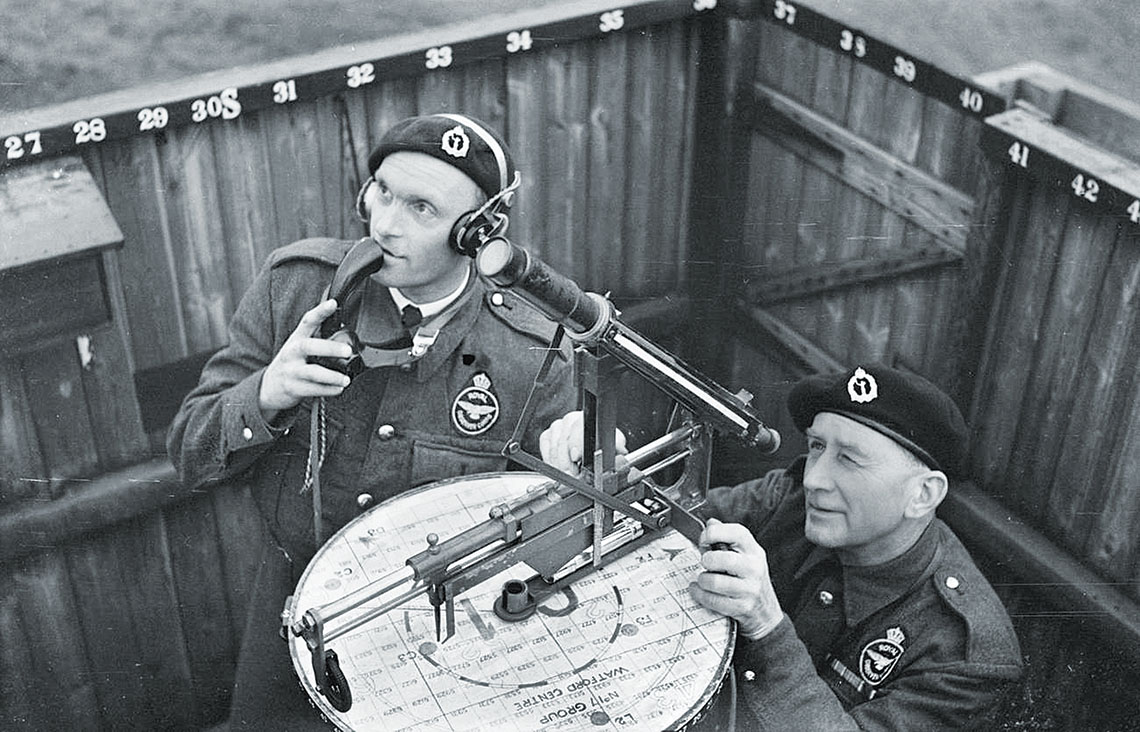
“In spite of the heavy losses we were inflicting on the enemy fighters, no decisive decrease in their number or in their fighting efficiency was noticeable,” wrote Generalleutnant Adolf Galland, who during the battle was a major leading a group of Bf 109s. “Even if the German figures of enemy aircraft destroyed were perhaps overestimated, the fact that their strength did not diminish could only be accounted for this way: England, by a great concentration of energy, was making up her losses in the peaceful nine-tenths of her territory.”
Thwarted in daytime air battles, the Luftwaffe in late October switched to night bombing, beginning the notorious “Blitz” that stretched into the spring. As Galland summarized, “Without fanfare or fuss the Battle of Britain came to an end.” Had it actually determined Britain’s fate?
In the summer of 1940 Britain faced an appalling military situation. Amid the spring debacle at Dunkirk the British Expeditionary Force had abandoned an estimated 475,000 tons of supplies and ammunition, nearly 700 tanks, 65,000 vehicles and more than 2,000 artillery pieces in enemy-occupied France. Despite resupply through late August, there remained serious deficiencies in automatic weapons, mortars and artillery. Exacerbating the situation were existing commitments in the Middle East.
Thankfully, U.S. governmental and private organizations rallied in support of Britain. Through 1941 an umbrella organization, the American Committee for the Defense of British Homes, collected nearly 6,000 firearms, including 110 Thompson submachine guns, plus 640,000 rounds of ammunition. This largesse continued into 1942 with another 14,000 weapons and 1.5 million rounds of ammunition. Only four of 64 shipments were lost at sea.
Yet despite the embattled nation’s grim situation, it is doubtful the Battle of Britain saved it from invasion, for two reasons.
First, although Hitler’s generals drafted a proposal for Operation Sea Lion—the planned invasion of Britain—his willingness to commit to what would have been the largest amphibious operation to date is dubious. The Führer believed in a bond among Anglo-Saxons, and his geostrategic goal was the destruction of the Soviet Union. More likely Hitler hoped the mere threat of invasion would compel a cease-fire with Britain, freeing him to move eastward.
Second, even if Hitler had the will to invade, Germany lacked the ability to conduct “Overlord in reverse.” The Wehrmacht was amphibiously impoverished, possessing almost no dedicated landing craft. In fact, bow-ramp vessels were in testing phases that summer. Meanwhile, the U.S. Navy was designing such versatile amphibious vessels as the landing craft mechanized (LCM) and far more capable landing ship tank (LST).
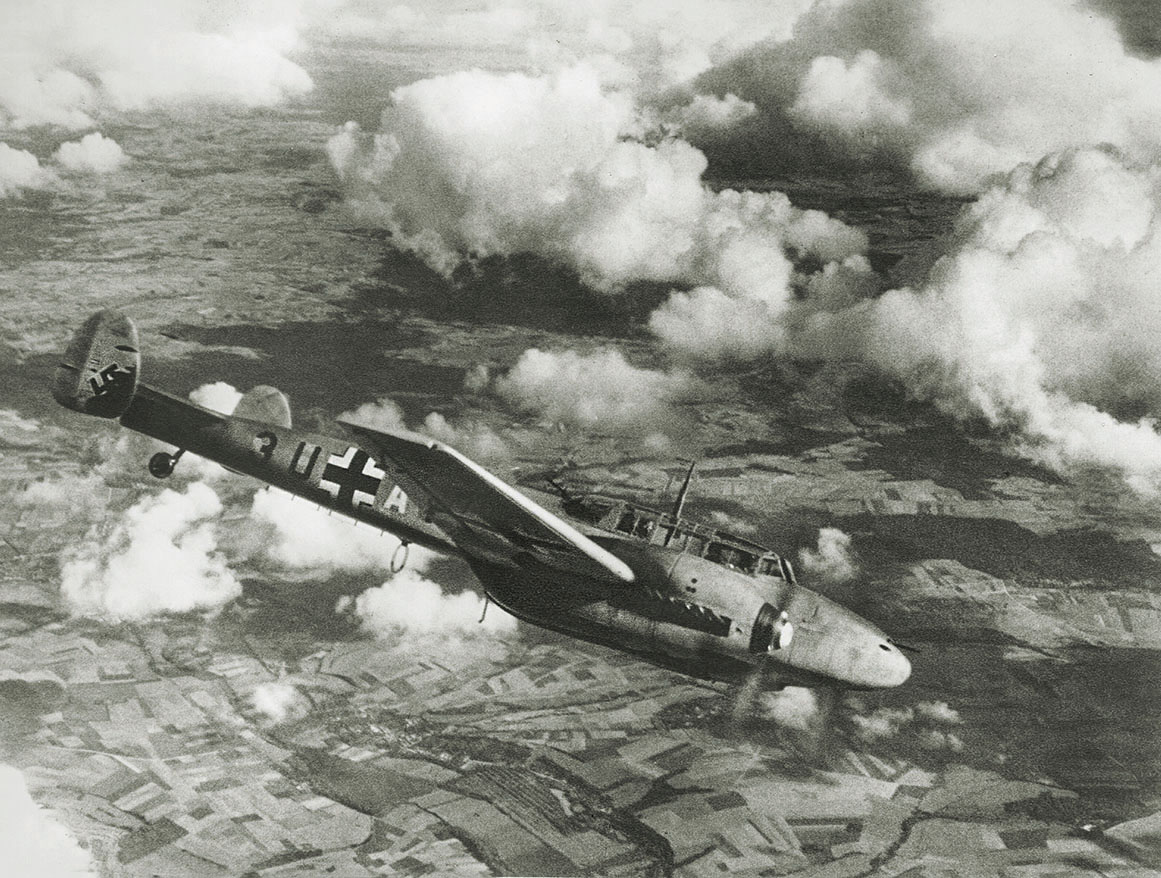
German planners needed a similar means of off-loading tanks, vehicles and artillery on hostile shores. Presumably that meant using dedicated auxiliary craft to hoist equipment from transports. To accomplish that Hitler would likely have needed to capture one or more ports. That was unlikely, even assuming Germany could achieve both air and naval superiority.
The operational plan called for 28 divisions in three waves. To deliver them the Germans accumulated some 2,400 barges from across Europe. Only about one-third of them were self-propelled, and few were capable of crossing the channel. Hundreds of tugs were needed to tow the barges to England and return to France for the succeeding echelons. That meant troops would remain aboard the barges until the tide receded, leaving them vulnerable to attack.
The German Kriegsmarine had sustained significant losses during the Norwegian campaign that spring, severely depleting its surface forces. According to one order of battle, the Kriegsmarine in September 1940 could muster only three cruisers and four destroyers to escort a channel crossing operation. The few heavy ships were delegated to diversionary operations unlikely to encounter much resistance. Lesser combatants included torpedo boats and U-boats, which could be effective, but would not offset the immense power of the British Home Fleet.
Although sources vary, it is known the Royal Navy as of June fielded about seven battleships or battlecruisers plus some 19 cruisers and nearly 40 destroyers in home waters, in addition to two aircraft carriers. Most of the ships operated well outside Luftwaffe bombing range but could respond to an invasion if required. Given the composition of Operation Sea Lion’s escort forces, the Royal Navy’s abundance of frigates and sloops, with larger combatants, could potentially have derailed the endeavor.
Discussions about the feasibility of the operation often overlook sea mines. Both navies devoted serious efforts to offensive and defensive mine warfare. Small vessels tasked with deploying and sweeping mines were essential components of British and German naval planning.
Assuming the Germans could reach the British beaches—then what? While planners had modified Panzer IIs to drive ashore, the lightweight tanks were nowhere near the door kickers required for a combined-arms assault should they survive a landing. Germany would need to bring ashore heavier weaponry—including larger tanks and towed and self-propelled artillery—which meant seizing channel ports intact. The British simply would not have allowed that to happen, especially at major cities like Portsmouth or Dover. Had Luftwaffe airborne forces secured the inland approaches, the defenders would have certainly destroyed port facilities.
That said, numerous smaller ports had adequate facilities for off-loading vehicles and equipment, assuming they could be seized and held. While achieving local air and ground superiority might have been feasible, the Germans would face serious problems regarding reinforcement and adequate supply channels. Coastal Britain’s erratic weather added to the uncertainty.
After the war General Günther Blumentritt reassessed Sea Lion. “Even had we succeeded in landing on the English south coast, the future would still be grim,” he wrote. “The terrain was suitable for defense and guerrilla warfare. Above all, however, even had we landed successfully, the great difficulty of supplying our troops would still have to be overcome. The English fleet and air force would certainly not have looked on idly!”
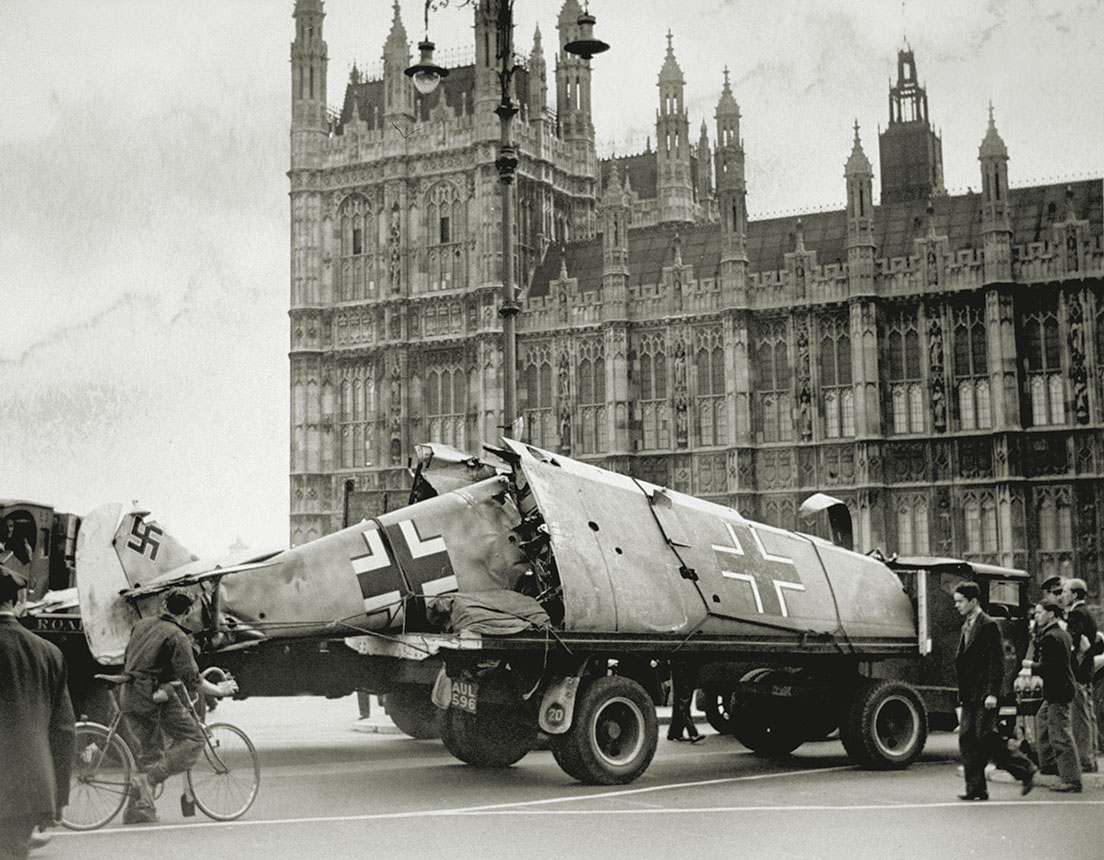
An extensive 1974 war game conducted at the Royal Military Academy Sandhurst concluded German troops likely could have gotten ashore, but the invasion would have proved unsustainable, especially given the barges’ extreme vulnerability. The war game umpires estimated Wehrmacht casualties at 80 percent or more.
In summary, had the Royal Navy expended most of its strength in repulsing Operation Sea Lion—though probably unnecessary—even that would have been acceptable to London. Playing a zero-sum game, the admiralty would find Britain still intact with German amphibious capability in ruins.
All honor, then, to the RAF, which fought the menacing Luftwaffe to a standstill in Kentish skies. But in the cold, reflective light of the 21st century, Shakespeare’s “scepter’d isle” was not in serious danger of conquest in the summer and fall of 1940. MH
Barrett Tillman is a frequent contributor to HistoryNet publications. For further reading he recommends Battle Over Britain, by Francis K. Mason; Forgotten Voices of the Blitz and the Battle for Britain, by Joshua Levine; The First and the Last, by Adolf Galland; and Duel of Eagles, by Peter Townsend.
This article appeared in the September 2020 issue of Military History magazine. For more stories, subscribe here and visit us on Facebook:

